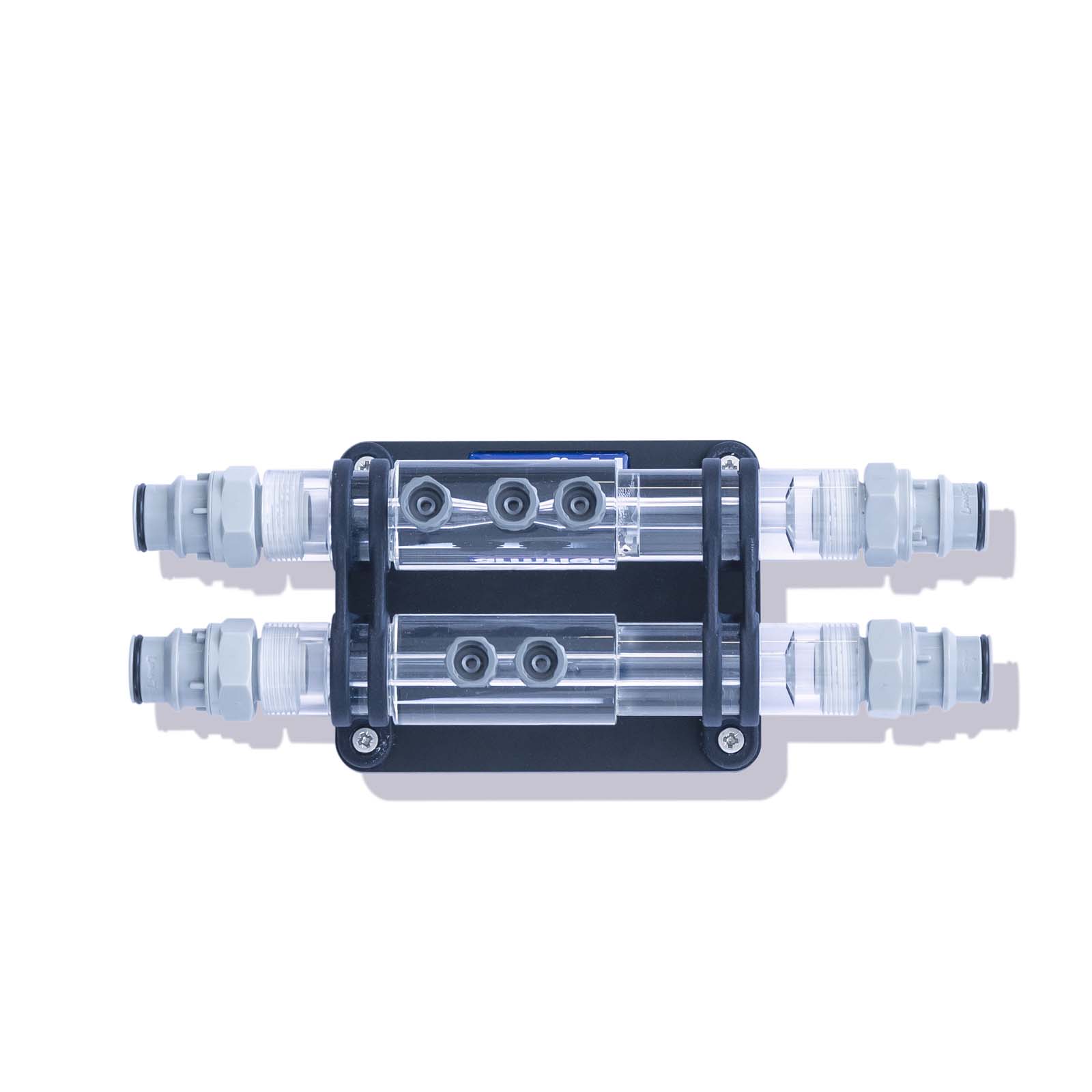Description
Combined with the Fluid Science Service Unit, (FS-SU), the Fluid Science Flow Measurement Tray, FS-1.1, provides hands on experimentation designed to demonstrate flow measurement and the relationship between velocity and pressure drop.
Utilising the (FS-SU) service unit the flow meters experiment can be easily mounted onto the multifunctional work panel and is connected to the built-in water supply via quick connect couplings. The differential pressure reading is taken using a digital manometer against varying flow rates.
The tray includes the following flow meters:
Venturi meter – Used to demonstrate Bernoulli’s equation, showing how low pressure is generated in the throat of a venture tube, and how this is affected by flow. The flow recovery is also demonstrated by measuring the total pressure drop across the module. The geometry of the venturi orifice is in accordance with standard industrial venturi flow meters, so the use of a venturi to measure flow can also be demonstrated
Orifice plate – The use of an orifice plate to measure flow is demonstrated by measuring the pressure drop across a defined orifice
The geometry of the orifice is in accordance with standard industrial orifice flow meters
Features
Compact high precision comparison of flow meters
Including Venturi Meter and Orifice plate
Quick connect couplings for easy connection to experiment modules, self-sealing on supply unit
Highly visual design
Flow rate control via (FS-SU) service unit
Differential pressure reading obtained using digital Manometer
Benefits
Applied student learning via experimentation
Common service unit can be used for either hot or cold-water supply
Tool-less assembly
Designed to be highly visual and simple to use
Quick setup
Suitable for both classroom and laboratory environments
Demonstration Capabilities
Types of flow measurement and its application
Explain the principles of a venturi meter and an orifice meter and why one is selected over the other in certain applications.
Pressure and velocity changes through a venturi meter i.e. increased velocity results in reduced pressure
Energy transition in a venturi and orifice plate meter
Mechanical energy balance on a venturi meter
Compare pressure drop across the entrance and exit of the meter (i.e. ΔP across entrance/ throat and ΔP across throat/ exit) and explain results
Explain the importance of discharge coefficient and calculate ideal flow rate across the both meters
Explain the term “vena contracta”, why it occurs in an orifice meter and its result (i.e. its permanent pressure)
Fluid Science Flow Measurement

 Enquiry:hkmarketing@epc.com.hk
Enquiry:hkmarketing@epc.com.hk  Whatsapp Enquiry: +85261990717
Whatsapp Enquiry: +85261990717










